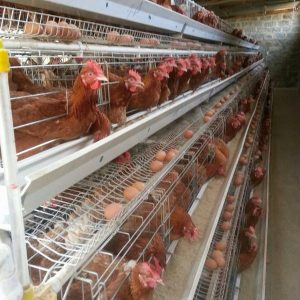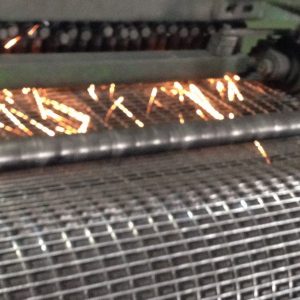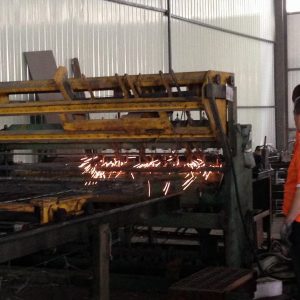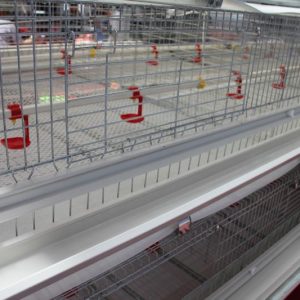
Improve breeder nutrition and improve chick quality
In order for the chicks to give full play to their genetic potential, whether the chicks themselves reach the best condition is a very important basis. For broiler production to be successful, one-day-old chicks should have good birth weight, complete nutritional reserves, good health conditions and perfect immune function. With such a foundation, and then provide the chicks with an appropriate breeding environment and nutritional level, the production performance of commercial broilers can achieve the best results.
The growth and development of embryos and newly hatched chicks completely depend on the nutrient reserves of the breeding eggs, so the physiological state of the newly born chicks is greatly affected by the nutritional level of the breeding hens.
Looking back at breeder nutrition, the nutritional problem of broiler breeders should include two aspects, namely, the content of various nutrients in the feed and the feed intake of the breeder. These two aspects should achieve a good balance to ensure that the daily nutrient intake of the chickens is accurate. One thing we must be aware of: the feed cost per chick produced by providing high-quality feed to the breeders is very low compared to the total feed cost spent on producing each broiler. Calini (2006) calculated that the feed cost of each chick produced by breeders only accounts for 7% of the cost of feed consumed to produce a 2.5KG broiler. This fully illustrates the importance of the nutritional value of breeder feed.
Broiler breeder feed nutrition level
When considering the feed nutrition of breeder chickens, nutritionists must pay close attention to every nutrient component of breeder feed. Let’s talk about protein first. Many studies have shown that the protein level in the feed during the laying period will affect the newborn weight of the chicks and the final broiler performance. There is a clear causal relationship between the protein content of the breeder feed and the newborn weight of the chicks.
According to this situation, when the feed energy of breeder is 2750 kcal/kg, the best feed protein level should be 15%. It must be remembered that this is the optimal protein level, not the lowest level. The high and low protein content of breeder feed is also harmful to the flock, especially when the protein content is too high, the fertilization rate will decrease. In addition, we must also pay attention to the quality of the protein in the feed. Nutritionists should ensure that high-quality sources of protein are used in the feed, and the amino acids must be balanced.
The effect of energy level in breeder feed on chicken quality is not as thorough as the study of protein. By consulting various information, the best energy intake of breeding hens is 440-480 kcal/feather/day, and the quality of chicks is the best. This is equivalent to an intake of 160-175 g/feather/day and an energy of 2750 kcal/kg feed.
When considering feed energy, we must pay attention to the fat content in the feed, especially the demand for some unsaturated fatty acids, such as linoleic acid. This essential fatty acid is necessary for cell membrane integrity, immune function and normal embryo development, and will directly affect the quality of the next generation of chicks. In actual production, the amount of fat added in the feed should be kept at a low level, and unsaturated fat should be added as much as possible.
Minerals, especially calcium, phosphorus, sodium, potassium, manganese and chlorine participate in the formation of eggshells and improve the quality of eggshells and thus the quality of breeding eggs and chicks. Changes in maternal phosphorus levels can affect the ash content in the bones of chicks from first-part hens. Therefore, the appropriate level of phosphorus must be provided in the breeder feed to ensure the integrity of the bones in the early growth and development stage of the chicks. For the study of minerals in feed, the most important thing is what kind of effective compound form is used to improve the mother’s ability to transfer these substances into tissues, eggs, and embryos. At present, most of them are focused on research on antioxidants and the role of selenium. Selenium-methionine a can improve the antioxidant capacity of vitamin E, breeding eggs, embryos, and chicks within 10 days of age. Supplementing zinc-methionine and manganese-amino acid mixture can improve the immunity and survival rate of chicks.
Table 1: The influence of some minerals on the production performance of offspring.
Vitamins are involved in the body’s main metabolic processes and part of the embryo’s development. Therefore, the lack of these nutrients in the feed will cause a negative impact on the performance of the breeder itself and the next generation. Vitamins only account for about 4% of the entire feed cost. Therefore, it is very unwise to reduce feed vitamin levels. Information on the relationship between the vitamin requirements of broiler breeders and the performance of the next generation is lacking. Most of the vitamin requirements of breeders have a strong timeliness, because the performance of breeders is constantly improving.
According to relevant data, vitamin E among the fat-soluble vitamins has the greatest impact on the production performance of offspring. Generally, in actual production, the feed should contain 100 mg/kg of vitamin E.
For new parent breeders, increasing the vitamin level in the feed has very significant commercial value for improving the performance of offspring. Both internal and field trials have proved that increasing the vitamin content in breeder feed (especially B vitamins and vitamin E) can improve the survival rate and early growth and development of offspring. Therefore, the vitamin content in the breeder feed should ensure that the vitamin content in the breeding egg reaches the highest standard.
The effect of feeding amount on the quality of chicks
In the early stage of production, if the breeding hens are not fed enough, it will have a greater impact on the quality of the chicks. The egg production rate of modern parent broiler breeders has increased much faster than in the past, and the laying interval of hens at this stage is also relatively short. Therefore, if the newly opened breeders are not fed enough, it will affect the transmission of nutrients. In the breeding eggs, the mortality of the later embryos increases, and the vitality and uniformity of the chicks are poor. Leeson conducted a feeding experiment on broiler breeders in 2004: feeding new breeders with different peak feed rates of 140-175 grams. As the feeding rate increases, the weight of the chicken population also increases, and the egg The weight has no obvious effect, but the weight of the chicks is affected by different feeding amounts. (See Table 2)
Point
•The nutrition of breeders affects the quality of chicks and the performance of broilers
•Improving the nutritional level of breeders can improve broiler performance
•Should provide appropriate and sustained and stable nutritional levels for breeders
•Determine the appropriate feeding amount according to the physiological needs of breeders, egg production rate and body weight
in conclusion
The research results prove that there is a strong causal relationship between breeder feed nutrition and chick quality and production performance. Therefore, no matter in the early stage of breeding chickens, or during the entire laying period, nutritionists must formulate the correct nutritional formula of feed, and breeder management personnel must also provide the chickens with an appropriate amount of feeding.



